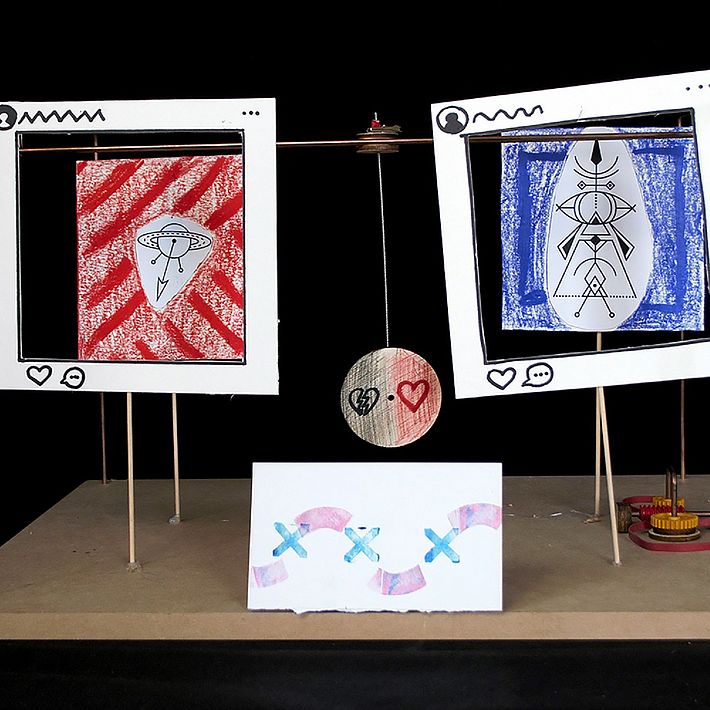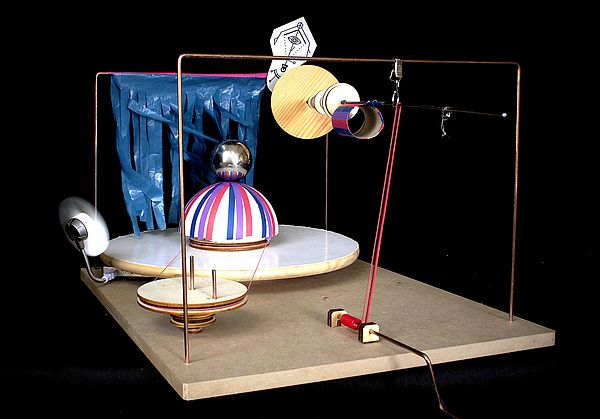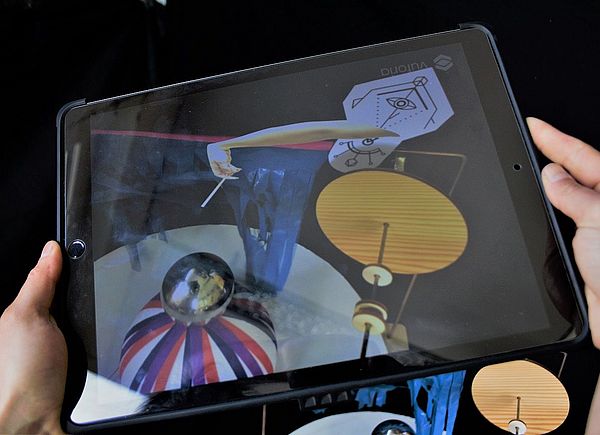Design Machines
Tinder machine or "storinator" – inspired by kinetic sculptures by members of the Bauhaus, sixth-form pupils at Erfurt schools conceived contemporary design machines, together with designer Henriette Abitz and the Bauhaus Agents. The "design machines" transform movement into narratives. In future, they will become a component of the communication and outreach programme at the Bauhaus Museum Weimar. We are showing some examples.

Movement is the foundation of all becoming.
Paul Klee
Headline
"Movement is the foundation of all becoming", Bauhaus master Paul Klee wrote in 1920. Inspired by Klee, László Moholy-Nagy and his light-space modulator, one of the most important kinetic sculptures of modern art, as well as studies and preparatory course exercises at the Bauhaus, sixth-form pupils in Weimar set out to explore movement and the possibilities for its depiction.
The young people were supervised by designer Henriette Abitz from Kollektiv Kubik. She invited the pupils to investigate movement in a playful way. They were led by the question, "How can art that changes constantly evolve via simple movements which we perceive everywhere in our everyday lives?" In cooperation with the Bauhaus Agents she developed the idea of a design machine – a kind of kinetic sculpture, that is, a sculpture that works with movement.

Theory and Practice
The starting point of the workshop was the active investigation of movement: How can I represent movement? How can I capture movement? And how did the members of the Bauhaus do it? The pupils found their inspiration in the main building of the Bauhaus University, where they tracked down historical sources. This was followed by studies of movement in town life. Later, all this was realised structurally in a workshop in the Other Music Academy. Like those of the Bauhaus members, the pupils' works evolved in a process of abstraction and transformation. The basic setting by Henriette Abitz and a pool of materials facilitated their mechanically moved sculpture.

Digitalization and Patterns
of Movement
For Moholy-Nagy, interdisciplinarity, multimediality and multisensory perception were the central aspects of his artistic creativity. In 2018 our everyday life is defined by another level, the digital. The pupils' machines combine analogue, simple mechanical movement with sequences of digital images. The inclusion of this additional level – by means of an app specially developed by Henriette Abitz, which can read trackers attached to the installation (similar to a QR-code) – helped the young people to train their machines to become storytellers. The emerging stories range from absurd to fantastic or mysterious, very imaginative stagings.

Walter-Gropius-Schule
Claudia Seiß / Teacher responsible
for the project
____________________________
Artistic supervision
Henriette Abitz / Designer
____________________________
2018
Johannes Siebler / Bauhaus Agent
Headline
The design machines produced in the workshop with pupils from the Walter-Gropius-Schule invite us to play, to consider, and to join in. The Tinder machine, for example, thematizes current dating practices: swiping to the right is a like, to the left is the opposite. A magic machine offers space for associations, another story machine takes up the idea of dancing. And the so-called "storinator" is basically a parlour game: the principle of chance decides who will be the next person to continue the story.
After the project had completed this first round, a continuation took place at the Freie Werkschule Meißen on 28th August 2018; in September the Bauhaus partner schools Aktiv-Schule Berlstedt and Thuringia International School Weimar were to follow. In future, the intention is for the format, as a half-day workshop or a two-day project for schoolchildren of different age groups, to become a firm component of museum and outreach work in Weimar.
(KL 2018)
